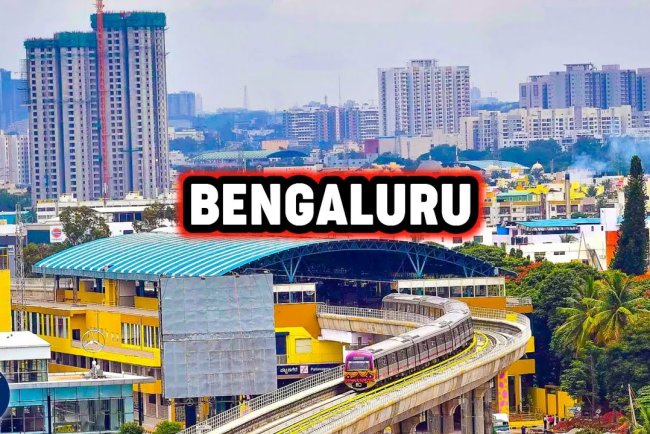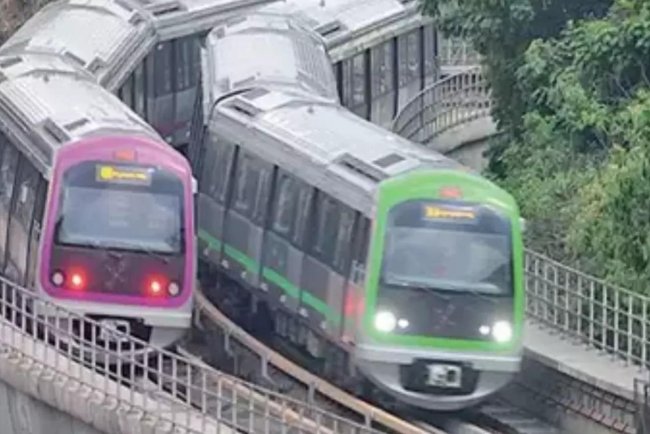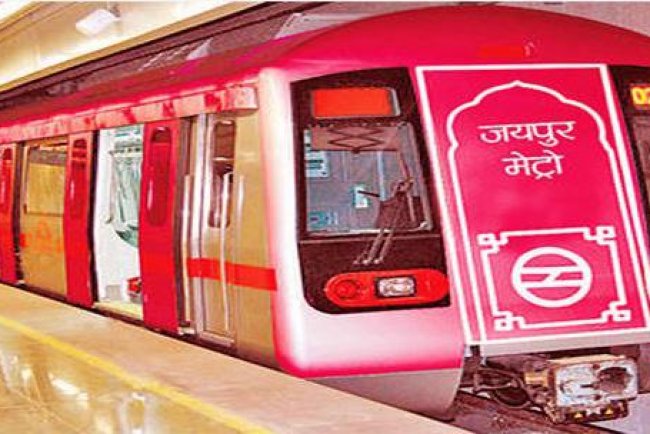Delhi Meerut RRTS Route Map
The Delhi-Meerut RRTS (Regional Rapid Transit System) route map is a major transport project in the National Capital Region. The route will start from Delhi and pass through Sahibabad, Ghaziabad, Modinagar and Muradnagar to reach Meerut. The total length of the route is 82 km and there will be mainly underground and elevated sections. The project aims to reduce the travel time between Delhi and Meerut by 60 minutes.The speed of the RRTS trains will be 160 km per hour, providing passengers with a faster and more comfortable travel experience. The entire route will have 24 stations, of which 17 will be elevated and 7 will be underground. The project is expected to be completed by 2025, significantly improving local connectivity.
Nobody would have ever imagined a decade ago that New Delhi would get connected to Merrut by a rapid rail system. The government has made it possible making Indians to feel proud with Rapid rail moving fast through various corridors from Merrut To Delhi. People who look in awe and feel great about it calls it a shining example of India’s fast change to adopt technology in rail systems. This has paved the way for various other corridors that will create change in the mode of commuting for people. Delhi-Merrut RRTS is 82.15 km operational with few stations on the route. The train or the rapid rail moves very fast at a speed of 160 KM/H. This makes it one of the fastest-moving trains on this route. The train is on regular intervals that connects few routes and make it easy for the people to reach their destinations. It has become an attraction among the onlookers and travelers as they were present in huge numbers on its day of inauguration. The train and its station were inaugurated by Modi ji on 20 October 2023. It is a hit among the commuters from the day first as people queue from morning till its last operational hours.

A complete project with well define mechanism
The project is financed as the first of three prioritized corridors for the well-planned Regional Rapid Transit System or RRTS. It is with connectivity to India’s national capital region (NCR). Delhi-Merrut RRTS passes through densely populated Delhi-NCR. It connects with multiple stations from Merrut to Sarai Kale Khan ISBT in New Delhi. The 82-km long corridor provides safe and reliable developments with high-capacity commuter transport services. It connects with various locations all along the corridor with necessary entry and exit points. The investment project will be financed with signaling, rail track, maintenance depot, and station buildings. It also adds support capacity with institutional developments of the National Capital Region Transport Corporation. It comes as a joint venture company of Government of India with the states of Delhi, Rajasthan, Haryana, UP. The project is with implementation by RRTS project across NCR. The development comes as one of the well-developed sections with state of an art regional mobility solution that compares it with the best in the world.
No air pollution, saves from heat and dust
The development of RRTS boosts all types of economic activity and it provides improved access to employment, healthcare opportunities, and education. It helps with significant developments with the reduction of air pollution, a cool atmosphere with all the comforts. It is ideal for travel during the harsh summers and cold winters with a temperature-controlled AC environment. The development is gaining ground which works in line with PM Gati Shakti National Master plans. The RRTS Network adds with extensive developments with multi-modal integration along with railway stations along Merrut Railway Station, Anand Vihar terminal, New Delhi Railway Station, proximity to Ghaziabad Railway Station, and Nizamuddin Railway Station. It makes it easier to reach the project area with immediate road connectivity as the majority of the stations have access to the main roads of cities. It connects well with the new multi-mode integration of metro stations, railway stations, bus services, etc. Delhi-Ghaziabad- Merrut RRTS Corridor at Sahibabad station is now operational on 17 km priority section. It connects Sahibabad to the Duhai depot which connects with a station at Ghaziabad, Guldhar, and towards Duhai all along the way. The foundation stone for the Delhi-Ghaziabad-Merrut corridor was laid by the PM on 8th March 2019. The first route on RRTS is serving the people from Sahibabad to Duhai depot. It marks as launch of Regional rapid transit system within India.

Connecting more than two major cities within more crowded yet develop area
The 17 km priority section on the Delhi-Ghaziabad Merrut Rapid rail corridor will be inaugurated by connecting Sahibabad to Duhai depot. It connects with Ghaziabad-Guldhar and Duhai on the way. It is rapidly emerging as one of the fastest mode of transport that will cater to millions of commuters once it gets fully operational. It is the development that comes with the vision of the Prime Minister’s vision to transform regional connectivity to Delhi. It adds new world construction which adds with world class transport infrastructure. The regional rapid transit system comes as new rail-based developments with semi-high speed train that covers high-frequency on dedicated route. Most of the project area is on dedicated path which goes overhead with pillars supporting the station and rail route. The rapid rail goes speeding through the busy lanes of Ghaziabad and soon it will traverse to both ends as Delhi and Meerut. It comes as new rail-based developments which come as semi-high speed trains. The RRTS development is one of the first of its kind for people of Delhi-NCR who have already witnessed the growth and development of Delhi-METRO which has made significant development and is getting well etched in history. The project will be in its completion stage by the middle of year 2025.
Also Read :
Salient features that makes it world class
It adds some of the features that makes it one of the best regional rapid rail in its category. Till today, the regional rails connecting the two cities were by Indian railways that used to travel at a scheduled time between cities as EMU trains. As people need fast and easier way to reach cities this makes it easier and ideal for the people to reach with a better ticketing system, entry-exit points.
Ø The coaches get 2*2 traverse seats with optimized aisle width with grab handles and rails to assist standing passengers.
Ø It adds overhead luggage racks which get adequate leg room.
Ø The RRTS gets mobile charging sockets and it has laptop charging sockets too.
Ø It adds with on-board wi-fi.
Ø It gets double glaze and comes with tempered glass large safety.
Ø It offers a panoramic view of the outside.
Ø RRTS Is equipped with a public announcement and displays system, infotainment displays, and dynamic route map display which also adds with emergency communication facilities.
Ø It gets automatic plug-in type wide doors that also reduce friction as well as noise.
Ø It comes with fire and smoke detectors, CCTV, Fire extinguisher, door indicators that are installed with it.
Ø It gets a dedicated wheelchair space that is near a rain doorway that provides easy access.
Ø RRTS trains and stations are designed to provide access to people which adds on stretchers in case of medical emergencies.
Ø It adds with lightweight and compact propulsion system which adds with high reliability and performance requirements.
Ø It has TCMS technology that adds with predictive and conditions which comes with monitoring features. It enhances the performance that comes with the fleet by providing extensive train-to-ground diagnostics.
Ø RRTS is a design that considers high acceleration and deceleration that the train needs to undergo that comes with maximum operational speed of 160 km.hr.
Ø It gets to RRTS station within every 5 to 10 km.It gets a smooth ride which has precise stopping accuracy and it also saves energy when the trains run with automatic train operation.
Ø Trains get comfortable premium class, reclining seats, that are accessible though a special lounge at platform level.
Ø With every train there will be one coach reserved for women passengers.
Stations which will connect by RRTS:

Jangpura - Sarai kale Khan - New Ashok Nagar - Anand Vihar - Sahibabad - Guldhar - Duhai - Duhai Depot - Murad Nagar - Modinaga South - Merrut South - Shatabdi Nagar - Begumpul - Modipuram















